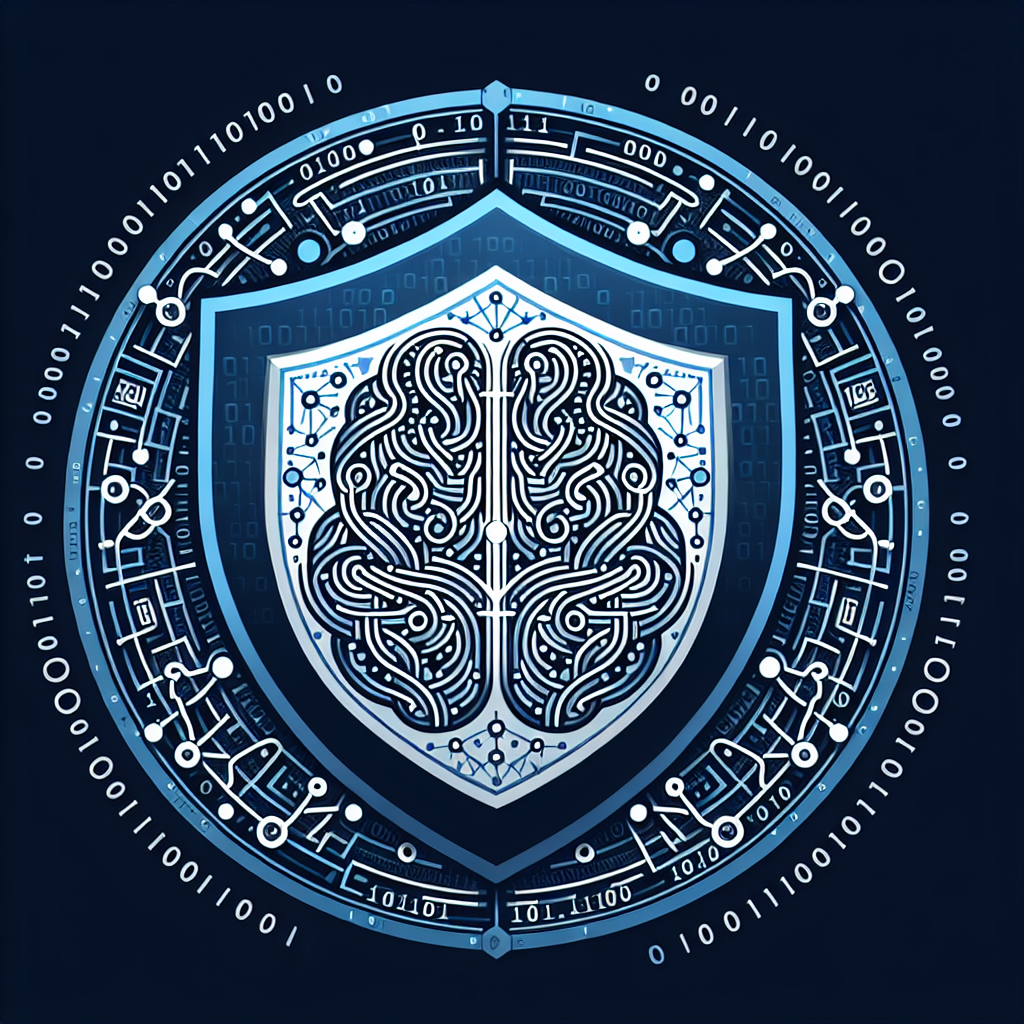Artificial Intelligence (AI) has been making significant strides in various industries, including cybersecurity. With the increasing sophistication of cyber threats, organizations are turning to AI to enhance their security measures and protect their digital assets. In this article, we will explore the potential of AI in cybersecurity, its benefits, challenges, and the future of AI-powered security solutions.
Benefits of AI in Cybersecurity:
1. Improved threat detection: AI-powered systems can analyze vast amounts of data in real-time and identify anomalies that may indicate a security breach. This proactive approach to threat detection can help organizations prevent cyber attacks before they cause any damage.
2. Faster response times: AI can automate the process of identifying and mitigating security incidents, reducing the time it takes for security teams to respond to threats. This can help organizations minimize the impact of a cyber attack and prevent data loss or system downtime.
3. Enhanced security analytics: AI algorithms can analyze security data more effectively than traditional methods, enabling organizations to gain deeper insights into their security posture and identify potential vulnerabilities. This can help organizations make more informed decisions about their security strategies and prioritize security investments.
4. Reduced false positives: AI-powered systems can help reduce the number of false positive alerts that security teams receive, allowing them to focus on genuine threats and improve their overall efficiency.
Challenges of AI in Cybersecurity:
1. Lack of transparency: One of the challenges of using AI in cybersecurity is the lack of transparency in how AI algorithms make decisions. Security teams may struggle to understand why an AI system has flagged a particular activity as suspicious, making it difficult to trust the system’s recommendations.
2. Adversarial attacks: AI-powered security systems can be vulnerable to adversarial attacks, where malicious actors manipulate the system to evade detection or generate false alerts. Security teams need to be aware of these risks and implement measures to protect their AI systems from such attacks.
3. Data privacy concerns: AI systems rely on large amounts of data to train their algorithms and improve their accuracy. However, collecting and storing sensitive data raises privacy concerns, especially in light of regulations such as the General Data Protection Regulation (GDPR). Organizations need to ensure that they handle data responsibly and comply with relevant data protection laws.
Future of AI in Cybersecurity:
Despite the challenges, the future of AI in cybersecurity looks promising. As AI technology continues to evolve, we can expect to see more advanced AI-powered security solutions that can adapt to emerging threats and protect organizations from cyber attacks. Some of the trends shaping the future of AI in cybersecurity include:
1. Deep learning: Deep learning algorithms, a subset of AI, have shown great potential in enhancing cybersecurity defenses. These algorithms can analyze complex patterns in data and detect subtle anomalies that may indicate a security threat.
2. Autonomous security systems: AI-powered security systems that can operate autonomously, making decisions and taking actions without human intervention, are becoming more prevalent. These systems can help organizations respond to security incidents more quickly and effectively, reducing the burden on security teams.
3. Predictive analytics: AI algorithms can analyze historical security data to predict future threats and help organizations prepare for potential attacks. By leveraging predictive analytics, organizations can enhance their threat intelligence and strengthen their security posture.
FAQs:
Q: How can AI help organizations improve their incident response capabilities?
A: AI-powered systems can automate the process of detecting and responding to security incidents, reducing the time it takes for organizations to mitigate threats. By analyzing security data in real-time and taking proactive measures to prevent attacks, AI can help organizations improve their incident response capabilities and minimize the impact of cyber attacks.
Q: What are the key considerations for organizations looking to implement AI in cybersecurity?
A: Organizations looking to implement AI in cybersecurity should consider factors such as data privacy, transparency, and the potential for adversarial attacks. It is important to carefully evaluate the security implications of using AI and ensure that appropriate safeguards are in place to protect sensitive data and mitigate risks.
Q: How can organizations address the skills gap in AI cybersecurity?
A: Addressing the skills gap in AI cybersecurity requires organizations to invest in training and development programs for their security teams. By providing employees with the necessary skills and knowledge to work with AI technologies, organizations can enhance their cybersecurity capabilities and stay ahead of evolving threats.
In conclusion, AI has the potential to revolutionize cybersecurity by improving threat detection, response times, and security analytics. While there are challenges to overcome, the future of AI in cybersecurity looks promising, with advancements in deep learning, autonomous security systems, and predictive analytics. By leveraging the power of AI, organizations can strengthen their security defenses and protect their digital assets from cyber threats.

